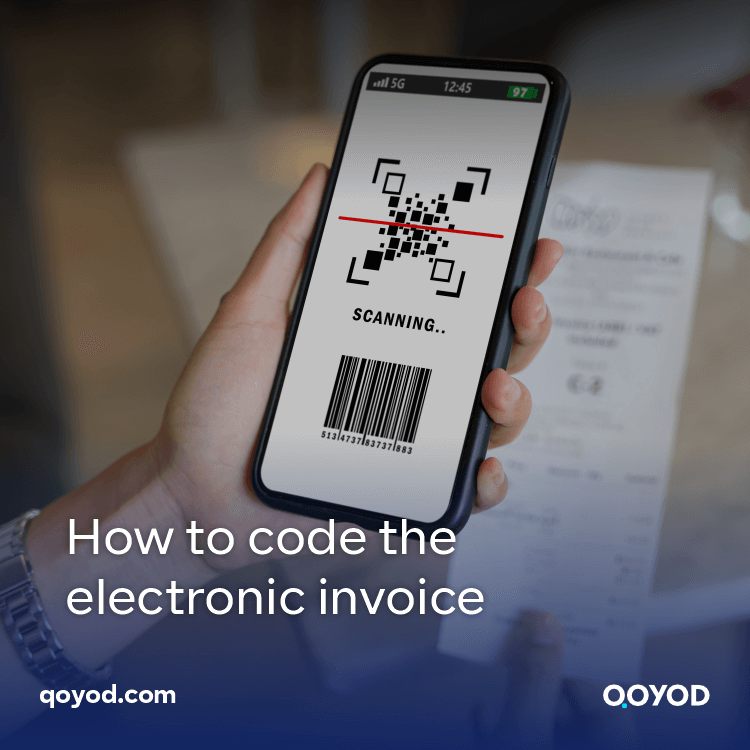Electronic invoice coding: a magical language that turns business into art
When you talk about coding the electronic invoice, you’re entering an invisible world of mystery and precision, it’s like you’re discovering a secret language that needs to be understood for successful trade, because you need to be able to read letters and numbers, and use it to paint a clear picture of your work and products; so we’ve come to you today with this article, which will be your best guide to help you decipher the code, Understanding how to code electronic invoices in an easy and fun way, so follow us, it is known that codes in the electronic billing world are like complex puzzles to be solved, as there are symbols with a local definition of your company and tax registration numbers that are key to achieving tax compliance.
What is the definition of electronic invoice coding?
That definition refers to the process of converting traditional invoice information into an electronic format that can be read and processed by computers and electronic systems. This approach is more efficient and cost-effective than traditional paper processes.
Innovative encryption technologies play a crucial role in the coding of the electronic invoice and aim to protect invoice data and ensure the confidentiality and security of sensitive financial and personal information. It is worth noting that encryption keys and other security means are used to encrypt information, so that access to it is limited to authorized persons only.
Coding electronic invoices with global GS1 codes
These codes are used in more than 116 countries around the world and provide a unified way to code and track products in the supply chain. It is known that each electronic invoice contains specific information that includes commercial data, product information, quantities, prices, etc.Others, GS1 codes allow for symbolic representation of this information, which can be read by appropriate electronic devices, such as barcode readers.
More information on the code.
The GS1 code consists of 13 numbers starting with 622 from the left, and this code is unique to each product and company, with GS1 generating this code and responsible for the distribution and management of these codes. It should be noted that companies can, after knowing the prices of GS1 codes, purchase them, use them for their products, and pay their electronic bills.
The importance of the GS1 Code
There are several benefits to the use of GS1 codes in coding electronic invoices, including:
- Facilitate the precise and effective definition of products; this reduces errors and facilitates indexing and classification.
- These codes contribute to improved product tracking and supply chain management, as the movement of the product can be traced from production to reaching the final customer.
- Improve inventory operations and store management.
How do I code an electronic invoice using GS1 codes?
To create an electronic invoice encrypted using GS1 codes, the company must follow some steps, including:
- Buy the codes from GS1 and get the license necessary to use them.
- Quyod can be used to support GS1 code preparation, to automatically include it in the electronic bill, and to generate appropriate codes for each product.
- Send the bill to clients via e-mail or e-commerce platforms.
- Clients can read code using barcode readers or appropriate smartphone applications.
Coding an e-invoice using GS1 codes may require some training and learning, but it provides significant benefits in improving the accuracy and efficiency of trade processes, warehouse management, improved product tracking, and a comprehensive view of the supply chain.
How to code an electronic invoice using GPC codes
For GPC code extraction, which is an abbreviation for Global Product Classification, there are two common methods:
Use the GPC browser.
Some browsers contain additions or supplements that allow the automatic generation of GPC codes. When using these tools, you can enter the information required for the invoice, such as the description, quantity, and price; the code will be automatically generated on the basis of this information.
This approach is based on the availability of a browser to support these additions and their relevance to your needs.
Request GPC codes from GS1.
GS1 is a global organization that develops and provides a range of standards and business knowledge, including: GPC codes: you can request a GPC code from GS1 by providing your invoice information and the codes you are looking for.
GS1 provides this service for free and sends you the codes you requested upon your request, so you must register and obtain your GS1 number before ordering the codes.
More information on the GPC code
Attention must be drawn to the fact that the use of GPC codes is based on the global classification system for products and services, which identifies unique codes for each product or service and is used to distinguish and identify different elements of electronic invoices; this thus helps to simplify processing, handling invoices through electronic systems, and tracking products.
Note
Please note that the practices and methods used to code an electronic invoice can change from time to time, so it is always advisable to keep up to date with the latest standards and practices related to electronic invoice coding in the country in which you operate.
Steps to code product codes on the Zakat, Tax, and Customs Authority website
Electronic invoice coding is the process of assigning unique codes to the different products sold in the electronic invoice. Coding helps in identifying products individually and accurately and allows the concerned authorities, such as Zakat, Tax, and Customs Authority, to track and analyze sales better. The following are general steps to code product codes on the Zakat, Tax, and Customs Authority website:
Preparing an Excel file
Prepare an Excel file that contains a list of all the products you wish to code, and it is worth noting that this file must contain information, including: product name, brief description, selling price, unit used (such as a piece or kilogram), and any other relevant information.
Search for product codes.
Visit the website of the Zakat, Tax, and Customs Authority, or the designated entity of your country, to find the tables or specific lists containing product codes.
These codes may be provided free of charge or require access by the competent authority in accordance with specific laws and regulations.
Product code identification
Use the information in your Excel file to assign codes to each product. You may have different options for designation, such as using the category codes and the main branch together to form a unique code for each product.
Download file
Once the codes are assigned to the products, save the file and upload it to the Zakat, Tax, and Customs Authority website, or the dedicated system used to issue electronic invoices.
Verification and confirmation
After uploading the file, the system may require verification and confirmation of the validity of the entered data, so make sure that all codes and details associated with the products are correct and match the information available in the original file.
Use codes in invoices.
After coding the products and confirming the validity of the data, you can use the codes to issue your electronic invoices. Simply enter the code in the invoice for each product, save the invoice in an electronic format that can be sent via email, or upload it to the approved electronic invoicing platform.
Note
It is important to note that the specific steps to code product codes may differ between different countries and entities, and there may be a specific system to be able to code the electronic invoice that must be followed in your country, so it is always advisable to see the official guidelines and specifications specified by the concerned authority in your country to ensure full and correct compliance with the requirements of coding the electronic invoice.
In conclusion…
This brings us to the end of our trip full of excitement and discovery in the world of coding electronic invoices. We have been able to open code doors and secret codes and turn them into beautiful language that conveys your work information accurately and easily, so you can now enjoy the benefits of electronic bills, which are characterized by rapid transmission and immediate delivery, accurate tracking of payments, as well as the ideal regulation of financial records.
Thanks to the use of technology and encryption, the encoding of electronic invoices has become more than just a commercial duty; it is a story told by numbers and symbols, reflecting the identity of your work and products, and through their accurate use, your reputation in the business market can be enhanced.
Do not hesitate to use the creative coding power of Qoyod to turn your electronic invoices into masterpieces, and do not forget that the program also offers electronic invoice systems as well as POS systems, stores, customers, etc., making it the best accounting program in Saudi Arabia.
After knowing how to code an electronic invoice, make this process fun and inspiring and enjoy your journey in the world of codes and creativity by using an effective accounting program, so try Qoyod now for free for 14 days, and you will not regret it.




